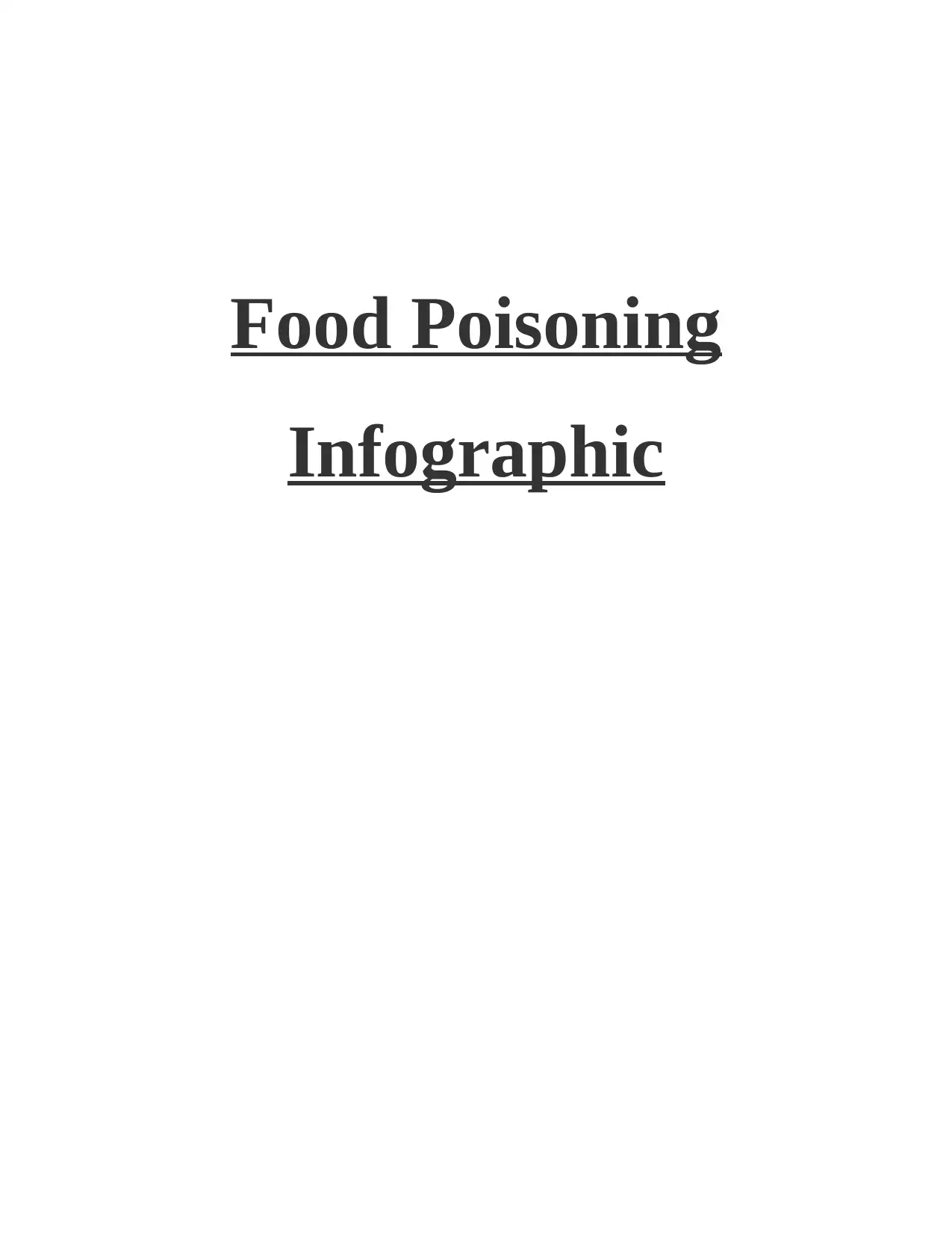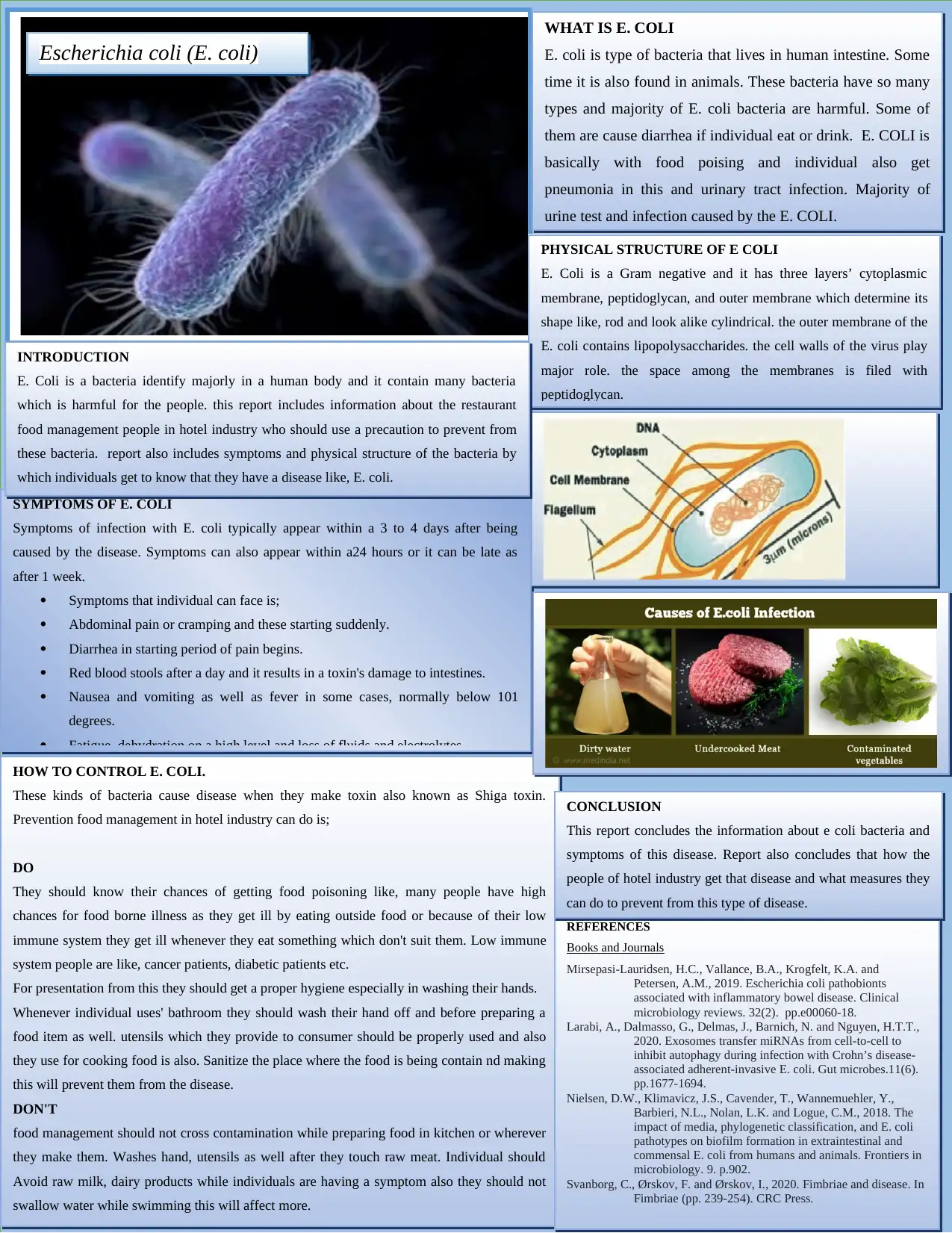Comprehensive Report on E. Coli: Symptoms, Prevention, and Control
VerifiedAdded on 2023/06/15
|2
|807
|347
Report
AI Summary
This report provides a comprehensive overview of Escherichia coli (E. coli), a bacterium commonly found in the human intestine, and its association with food poisoning. It details the physical structure of E. coli, emphasizing its Gram-negative nature and the role of its cell walls. The report outlines the typical symptoms of E. coli infection, including abdominal pain, diarrhea, bloody stools, nausea, vomiting, and potential complications like fatigue and dehydration. Crucially, it addresses control measures, particularly for the hotel industry, focusing on hygiene practices, prevention of cross-contamination, and avoiding risky food and water sources. The report concludes by summarizing the key information about E. coli, its symptoms, and preventive strategies, referencing academic sources for further study. This document is available on Desklib, a platform offering study tools and solved assignments for students.
1 out of 2








![[object Object]](/_next/static/media/star-bottom.7253800d.svg)